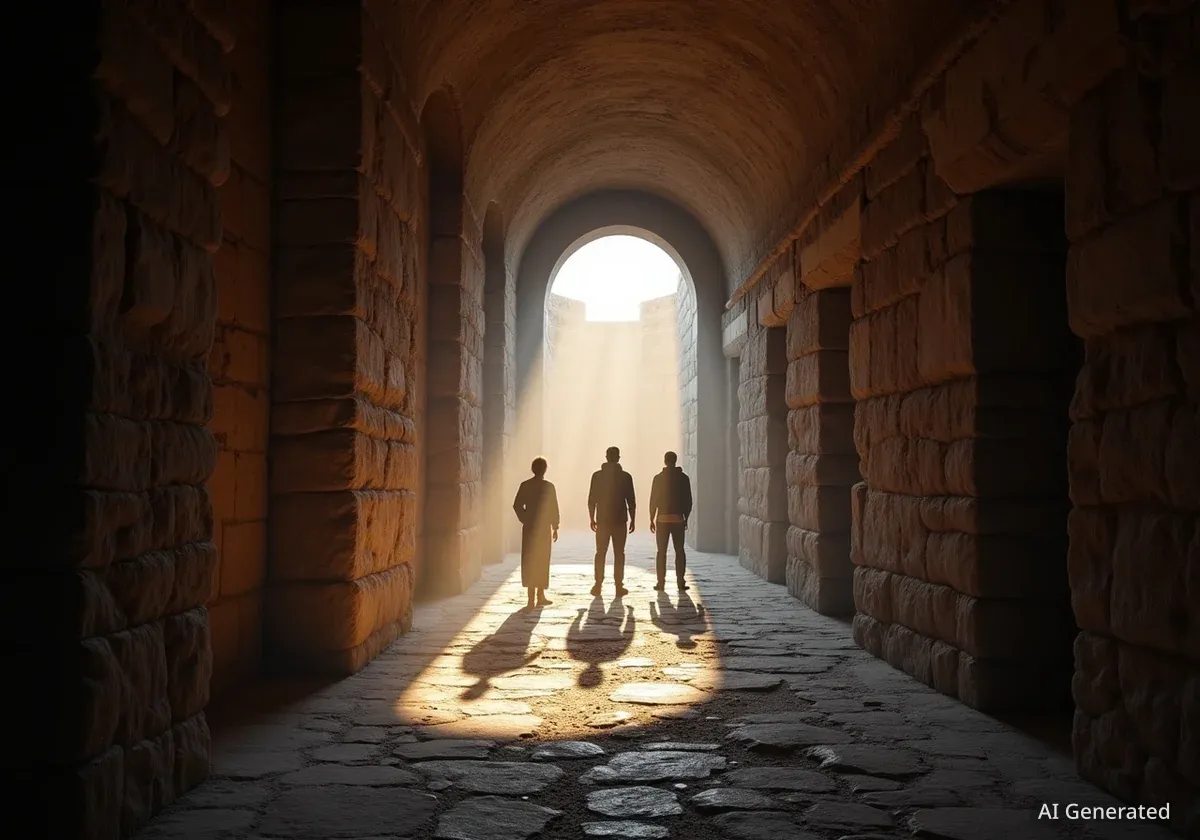For the first time in nearly two millennia, visitors to the Colosseum in Rome can now access a hidden tunnel once reserved exclusively for Roman emperors. The newly restored passageway offers a unique glimpse into the private movements of the ancient world's most powerful figures, revealing a path built for both grand entrances and secure escapes.
Key Takeaways
- A previously hidden tunnel used by Roman emperors at the Colosseum is now open for public tours.
- The passageway was constructed between the first and second centuries A.D. for imperial security and surprise appearances.
- Access is limited to small, guided groups of no more than eight people to preserve the delicate structure.
- The tunnel is named after Emperor Commodus, who reportedly survived an assassination attempt within its walls.
An Exclusive Glimpse into Imperial Life
Visitors to Rome's most famous landmark have a new, exclusive experience available. A small gate near the imperial box, where emperors once watched gladiatorial combat, now leads down into a subterranean corridor. This route was never intended for the public, serving as a private entrance and exit for the emperor and his entourage.
According to Barbara Nazzaro, the director of architecture at the Colosseum, the opening of the passage provides a look into a "very, very exclusive" aspect of Roman history. Due to the confined space and fragile nature of the surviving decorations, access is carefully managed. "It's a very narrow place, very delicate," Nazzaro noted, explaining that the beautiful stuccos are within easy reach of visitors.
A Monumental Undertaking
The construction of this tunnel was a significant engineering feat. It was not part of the Colosseum's original design from 80 A.D. Instead, it was added later by boring directly through 12 meters of the amphitheater's solid foundations, demonstrating the high importance placed on its function.
Built for Glory and Security
The motivation for such a difficult construction project was twofold, according to restoration officials. First, it allowed an emperor to make a dramatic and unexpected appearance in the imperial box, delighting the massive crowds gathered for the games. This element of surprise was a powerful tool for public image.
The second, and perhaps more critical, reason was security. Angelica Pujia, the chief of restoration at the Colosseum, explained that emperors constantly faced threats to their lives. "Emperors were always risking their lives, so this was a way probably to let the emperor reach the imperial box," she said. The tunnel allowed the ruler to move from outside the amphitheater to his seat without ever coming into contact with the general populace.
"What we see from today is a wonderful passage that was for the emperors, so something very, very exclusive." - Barbara Nazzaro, Director of Architecture at the Colosseum
Echoes of a Lavish and Brutal Past
Though time has faded its original grandeur, remnants of the tunnel's lavish decorations are still visible. Pujia described how the passage was once adorned with opulent materials. "There was a marble veneering on the wall, a marble decoration. And the ceiling was decorated with painted plasters," she explained.
The painted scenes depicted common forms of entertainment from the era, including jugglers, athletes, and violent fights with wild animals. These images served as a prelude to the spectacles awaiting in the arena above.
The Colosseum's Deadly Inauguration
The scale of animal slaughter for entertainment was immense. According to ancient sources, the 100-day inauguration ceremony for the Colosseum resulted in the killing of approximately 5,000 wild animals. This practice had a devastating impact on wildlife populations, particularly in North Africa.
The Commodus Connection and an Unsolved Mystery
The passageway has been named after Emperor Commodus, who ruled from 177 to 192 A.D. and was famously depicted in the film Gladiator. Historical chronicles suggest that Commodus may have survived an assassination attempt that took place within this very tunnel, cementing its connection to the constant danger faced by Roman leaders.
While approximately 180 feet (about 55 meters) of the passage has been restored and opened, a significant mystery remains. Archaeologists have not yet determined the tunnel's ultimate origin point outside the Colosseum. Much of it remains buried under the modern city of Rome.
"One day, maybe we will continue to dig the other part of the passage that we don't know where it goes," said Nazzaro. For now, the excavated section offers an unprecedented journey into the daily reality of a Roman emperor, walking the same stones they did to enter the heart of their empire's greatest spectacle.





